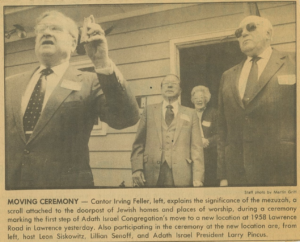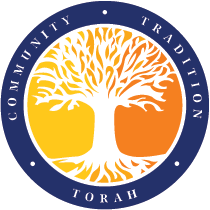In the Jewish calendar, between the 17th of Tammuz and the 9th of Av, is the Three Weeks, a period of morning when we commemorate the time between the breaching of the walls of Jerusalem and the destruction of the Temple. During this time, we read three haftarot related to the theme of destruction rather than the theme of the Torah portion. In the first of these haftarot of admonition we read the opening of the Book of Jeremiah and his call to prophecy. In fact, God gives him his mission statement:
רְאֵ֞ה הִפְקַדְתִּ֣יךָ ׀ הַיּ֣וֹם הַזֶּ֗ה עַל־הַגּוֹיִם֙ וְעַל־הַמַּמְלָכ֔וֹת לִנְת֥וֹשׁ וְלִנְת֖וֹץ וּלְהַאֲבִ֣יד וְלַהֲר֑וֹס לִבְנ֖וֹת וְלִנְטֽוֹעַ׃ {פ}
See, I appoint you this day
Over nations and kingdoms:
To uproot and to pull down,
To destroy and to overthrow,
To build and to plant.
This is the role of a prophet, to sometimes deliver bad news, to rebuke the people when they have done something wrong and to let them know that they have not lived up to the expectations of God. Sometimes that means “[t]o uproot and to pull down, [t]o destroy and to overthrow”, but in the end, the goal is ultimately “[t]o build and to plant”.
This is the natural life cycle of the Jewish community as well. Nothing lasts forever – communities grow, they age, they decline and sometimes they die and need to be reborn and revitalized. In a sense, the history of Adath in the 1980s and 1990s is one of לִנְת֥וֹשׁ וְלִנְת֖וֹץ … לִבְנ֖וֹת וְלִנְטֽוֹעַ, to uproot and to pull down [but also] to build and to plant.
The congregation had to decide whether to stay in Trenton or move, and if to move, then where? The building was aging so a group of 14 members in 1980 established the Capital Fund to maintain it. This fund still exists and has been a tremendous asset to our community, a great example of planting seeds that we have been harvesting for years.
 In 1984, Adath did a demographic study to figure out where future growth would be, and in 1986 a piece of property in Lawrenceville was bought. The next year, a mezuzah was placed on the old Wenczel home that we now call the Bridge building, which served as Adath’s home until the current building was built in 1991. In the meantime, Rider University’s chapel served as a location for b’nai mitzvah and High Holy Day services.
In 1984, Adath did a demographic study to figure out where future growth would be, and in 1986 a piece of property in Lawrenceville was bought. The next year, a mezuzah was placed on the old Wenczel home that we now call the Bridge building, which served as Adath’s home until the current building was built in 1991. In the meantime, Rider University’s chapel served as a location for b’nai mitzvah and High Holy Day services.
To build a community here in Lawrenceville, we need to uproot from Trenton. Ruth Sugerman, who was the chair of the development committee and is still an associate member, said at the time:
It has to happen. The congregation has to go where the people are. … I’ve been involved with the synagogue for so long that I might be a little bit sad. But our rabbi [Martin Merin] has only been here three years. He has the spunk and fire to move.
The president at the time, Larry Pincus, expected many new families to move to area, at least 30,000, and he thought maybe 10% would be Jewish. This would offer the possibility of growth, and the prediction turned out to be accurate. He noted that in 1986 the average age of the congregation was 55, and it had been even older than that a few years earlier.
The vision of these leaders was to build and to plant in a place that would allow the congregation to thrive, and that is exactly what happened. Even though the community had to uproot itself from Trenton, we brought with us the things that made that place special. Some of what we brought were physical, tangible items like our ner tamid (eternal light) and the 1920s chandeliers that hang throughout the building. We also brought the values and principles that had guided Adath for decades: a commitment to the Jewish people, the community at large, and Israel.
In our archives I found a January 13, 1992, letter to Vincent Lee, president of the synagogue.
Dear Mr. Lee:
Thank you and Ernestine Urken for your thoughtful letter about the revocation of Resolution 3379. I, too, am delighted by this action of the United Nations. As you know, the United States rejected the resolution from the day that it was passed, and we are gratified that many other nations joined in our efforts to bring about its repeal. This step has enhanced the credibility of the United Nations and serves to advance the cause of peace in the Middle East.
Best wishes.
Sincerely,
[President] George [H. W.] Bush
United Nations General Assembly Resolution 3379, adopted in 1975, “determine[d] that Zionism is a form of racism and racial discrimination”. It was revoked by Resolution 46/86 on December 16, 1991.
In Lawrenceville we also found new values to embrace and celebrate. Rabbi Daniel T. Grossman joined in 1988, after the purchase of the property but before construction began. He was committed to full inclusion for all in the synagogue and Jewish community and helped to guide the design of our barrier free building. We also celebrated the first woman to serve as president, Bernice Abramovich.
With all of the excitement and joy of the move, there were obstacles as well. The finances were always challenging, and moving to a new location elicited antisemitism, even though Lawrenceville already had two congregations: Temple Micah and Young Israel. After the congregation placed a sign on Route 206 that read “Future Home of Adath Israel Congregation”, it was defaced and vandalized with Nazi graffiti. Fortunately, the community expressed its support of Adath and repudiated the hate. One resident even came out to remove the offensive messages himself. The authorities suspected him of the vandalism until they realized that he was actually trying to erase it.
 After the incident, the other religious institutions in town put up their own sign next to ours with the names of their organizations that read “The Religious Communities of Lawrence Welcome our new neighbor”. What started as an act of hate became an act of love, friendship, and community.
After the incident, the other religious institutions in town put up their own sign next to ours with the names of their organizations that read “The Religious Communities of Lawrence Welcome our new neighbor”. What started as an act of hate became an act of love, friendship, and community.
In the 1990s, Adath continued to grow so that we have the community that exists today. We thank those in 80s and 90s who had a vision and saw it through. As Jeremiah learned in his role as a prophet, it is not always easy to uproot, but sometimes that is the only way to build and plant for the future.
